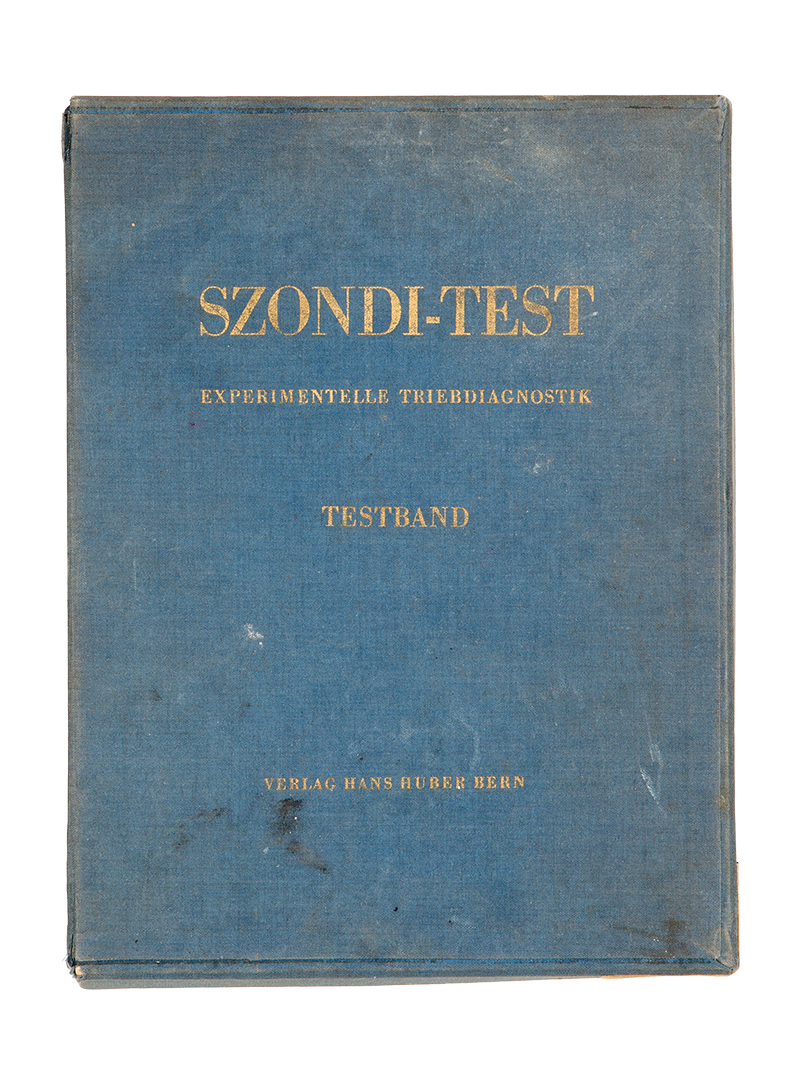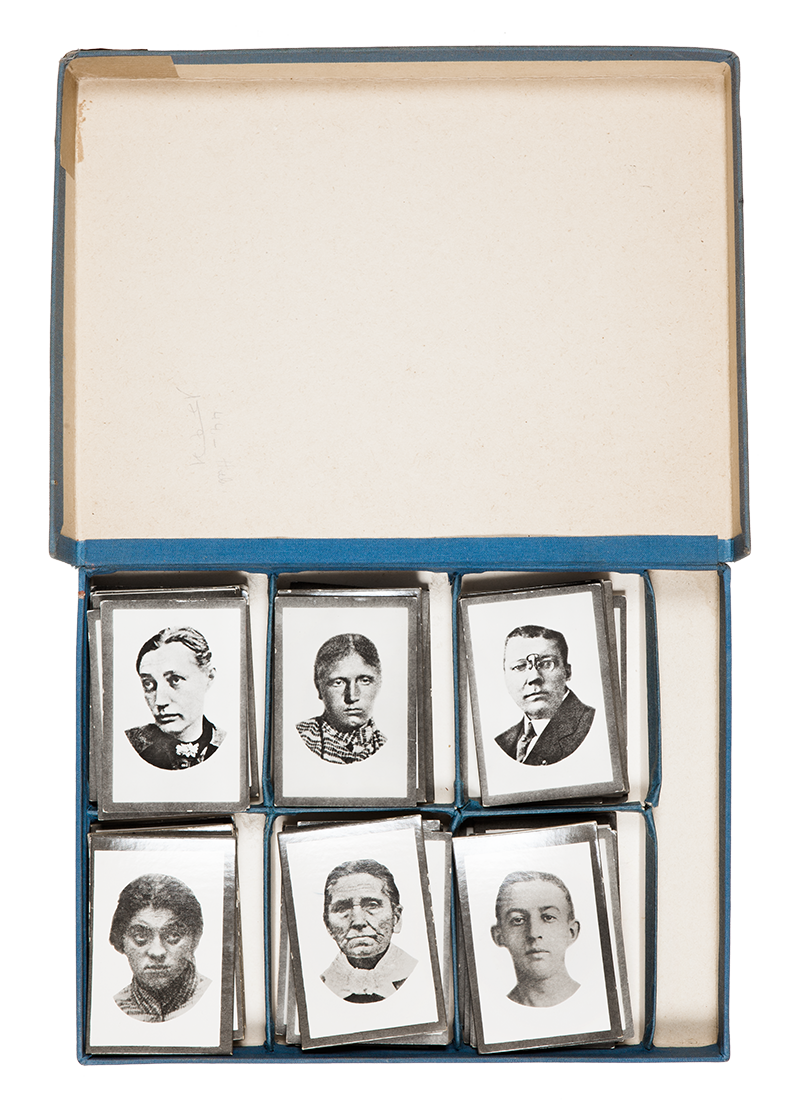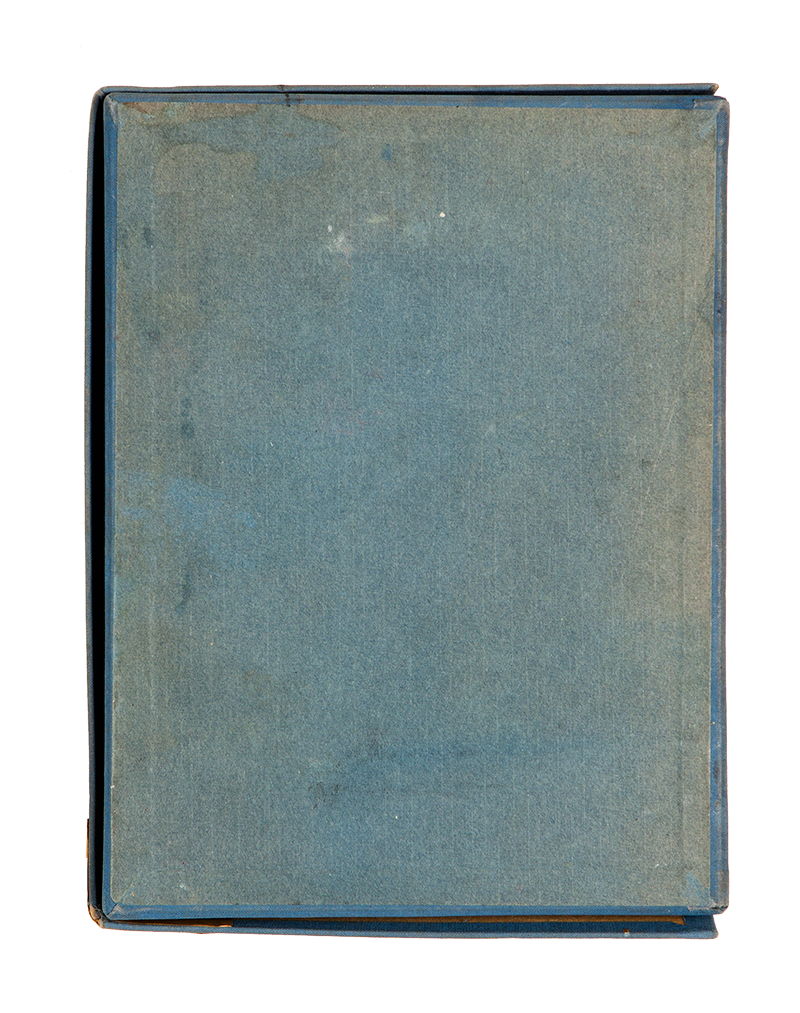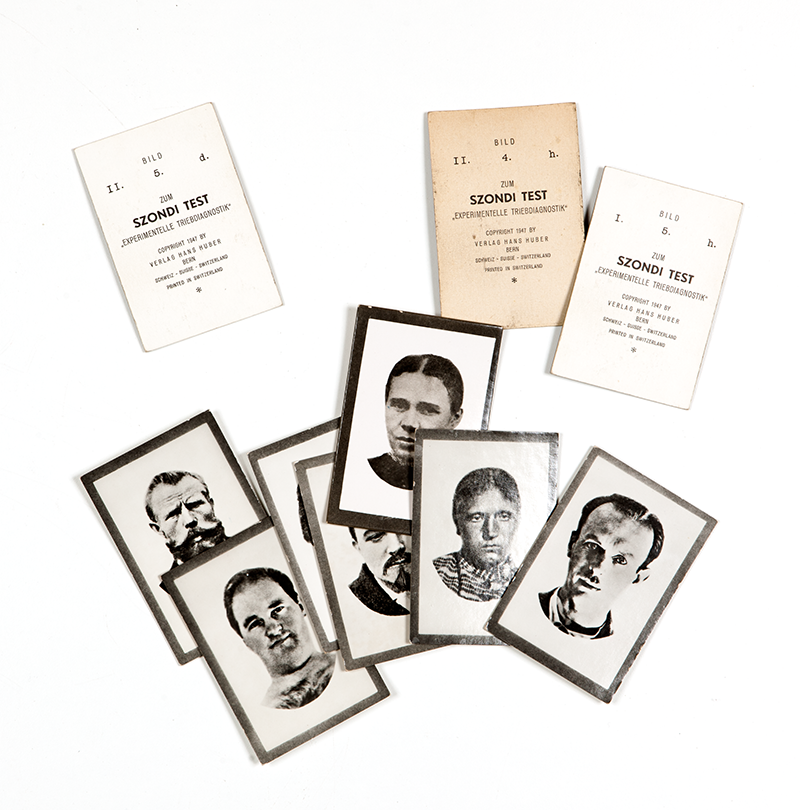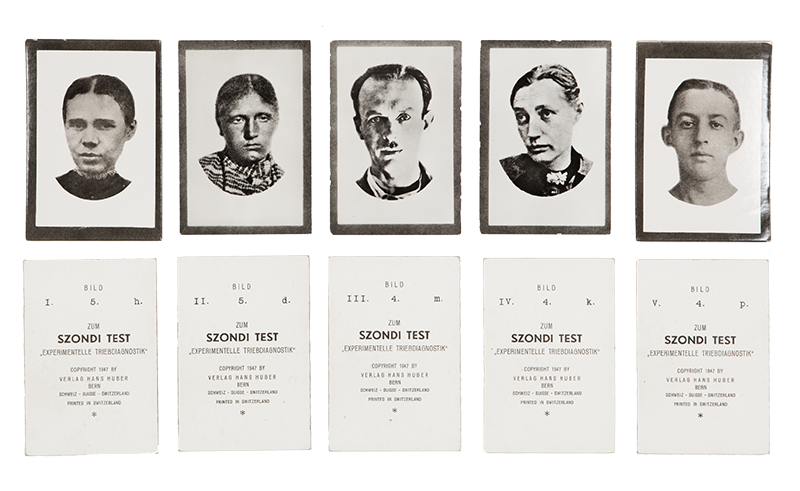Szondi-Test
“Szondi Test” box with 48 silver gelatin prints on cardboard, 25 x 19 x 3 cm.
The Szondi test is a psychological exam invented around 1935 by the Hungarian psychiatrist Léopold Szondi at the Eötvös Loránd University in Budapest.
The test could be categorized as a projective personality test – like the better-known Rorschach test, but with the crucial difference of being nonverbal. The test consists of showing a test subject a series of facial photographs, displayed in six groups of eight photos. All 48 faces featured in the photographs are of “mental patients” and each group contains a person whose personality has been classified as homosexual, sadist, epileptic, hysteric, katatonic, paranoid, depressive or maniac. The subject is asked to choose the two most appealing photos and the two most repulsive in each group. These choices supposedly reveal the test subject’s satisfied and unsatisfied instinctive drive needs, as well as the subject’s dimensions of personality. Each photo is supposed to work as a stimulus, to help detect the instinctive drive tendencies of the test subject and allow their main personality traits to surface. Szondi believed that, for some disturbed subjects, the stimulus of seeing a photograph of a mental patient with the same pathology as them could cause them to have a crisis and experience convulsions during the test. Szondi stated that people were inherently attracted to others similar to them. His theory of genotropism proposes that there are specific genes that regulate mate selection, and that individuals with similar genes will seek each other out. To interpret the test scores, a variety of methods were developed by Szondi and other researchers, which can be classified as quantitative, qualitative and proportional. Thirty of the 48 photographs were taken from Wilhelm Weygandt’s 1901 Atlas
und
Grundriss
der
Psychiatrie, which is now in the public domain. Of the remaining 18 pictures: four were from Magnus Hirschfeld’s Sexuelle
Zwischenstufen:
Das
männliche
Weib
und
der
weibliche
Mann (1918); two from Otto Binswanger’s Die
Hysterie (1904); one from Theodor Kirchhoff’s Der
Gesichtsausdruck
und
seine
Bahnen
beim
Gesunden
und
Kranken,
besonders
beim
Geisteskranken (1904); and one from Friedrich Scholz’s Lehrbuch
der
Irrenheilkunde:
für
Aerzte
und
Studirende (1892). Six of the photographs were from the Swedish Institute of Criminal Psychiatry. A further four were taken by Szondi himself in Hungary. The shock element of the photos is crucial. In response to an experiment that used alternative pictures of mental patients, Szondi argued that because the photos were nicer, or less disturbing, they failed to trigger the appropriate responses.









